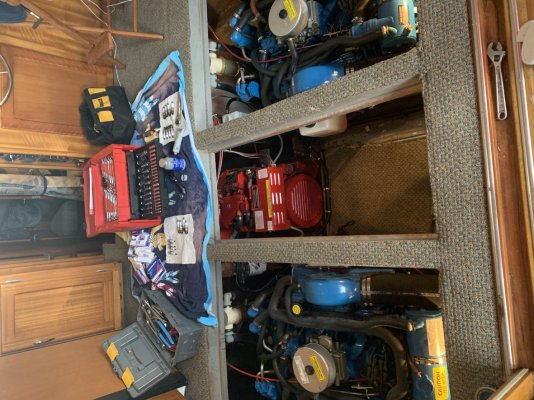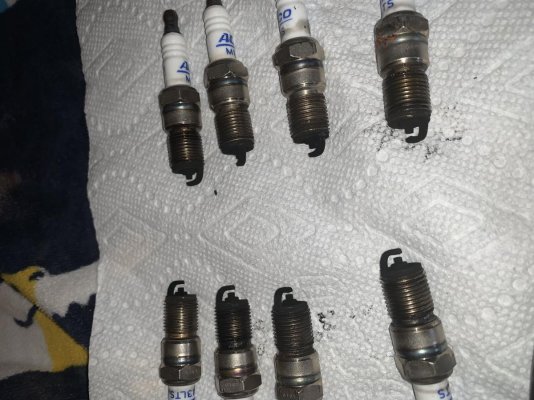RonR
Guru
Anyone a Chevy 350 expert?
Twin 350 Crusaders. 450 hours each, replaced in 2006 with complete factory replacement, everything was new.
Port side (Angela) runs well, but diesels when you turn her off.
Starboard side (Brittany)has only ran well one time. Last trip out she would not run above 2500 rpm for about 5 min regardless of fuel.
Exhaust shows fuel coming out. As your facing the engine the left bank sounds like it has a miss or two. Plugs show it’s running really rich. I have adjusted the carb to match the good running engine, about 1.5 turns out on each side (Holley with vacuum secondary’s). I have checked timing and it’s at 10 per the manual, no vacuum advance on these distributors. New plugs/cap/rotor/oil/filters to include fuel.
I pulled each spark plug wire to try and find the cylinder/s that are not firing and I can not tell a difference, but strong spark coming off the cap. It did run well for about 5 min today and I was able to adjust the idle down to 600 per the manual and check timing, but right after that it started missing again and would not run below 950. I’m not sure if I’m fighting a carb issue or some kind of electrical issue. This engine also diesels when you turn it off.
Twin 350 Crusaders. 450 hours each, replaced in 2006 with complete factory replacement, everything was new.
Port side (Angela) runs well, but diesels when you turn her off.
Starboard side (Brittany)has only ran well one time. Last trip out she would not run above 2500 rpm for about 5 min regardless of fuel.
Exhaust shows fuel coming out. As your facing the engine the left bank sounds like it has a miss or two. Plugs show it’s running really rich. I have adjusted the carb to match the good running engine, about 1.5 turns out on each side (Holley with vacuum secondary’s). I have checked timing and it’s at 10 per the manual, no vacuum advance on these distributors. New plugs/cap/rotor/oil/filters to include fuel.
I pulled each spark plug wire to try and find the cylinder/s that are not firing and I can not tell a difference, but strong spark coming off the cap. It did run well for about 5 min today and I was able to adjust the idle down to 600 per the manual and check timing, but right after that it started missing again and would not run below 950. I’m not sure if I’m fighting a carb issue or some kind of electrical issue. This engine also diesels when you turn it off.



